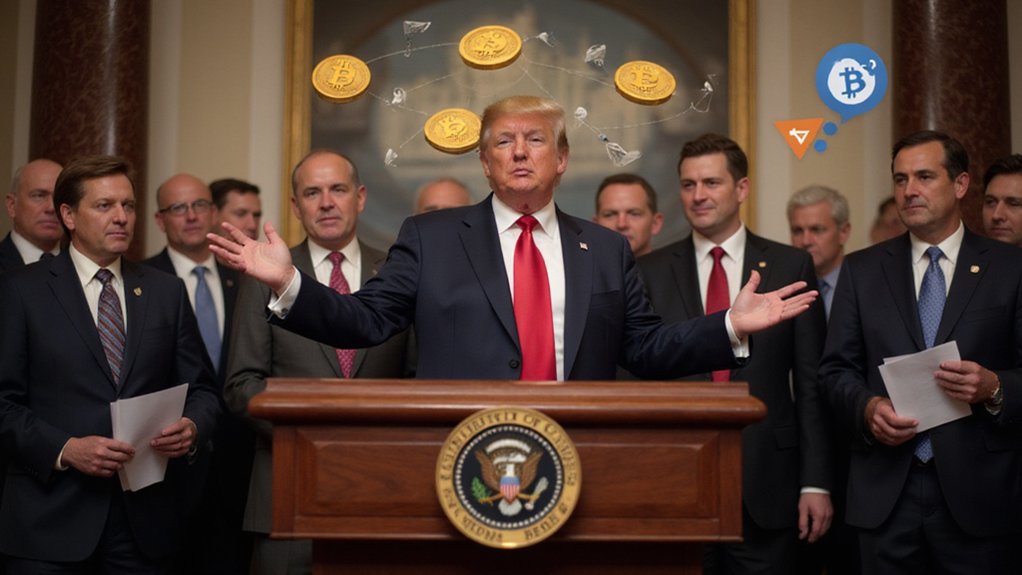How swiftly the political winds have shifted in Washington’s approach to digital assets.
After years of regulatory ambivalence—if not outright hostility—the Republican Party has executed a remarkable volte-face on cryptocurrency policy, with former President Trump’s embrace of blockchain technologies serving as both catalyst and compass.
The administration’s issuance of executive orders establishing a Strategic Bitcoin Reserve and the family’s foray into NFTs and branded digital coins have transformed what was once a fringe financial innovation into a central plank of conservative economic policy.
The Trump camp’s pivot toward crypto represents more than mere technological affinity; it constitutes a savvy political calculation.
Trump’s crypto embrace strategically courts influential digital investors while cementing a new conservative economic cornerstone.
By courting the increasingly influential (and deep-pocketed) crypto investor class, Republicans have consolidated a politically active donor base at a critical juncture.
This enthusiasm has manifested in substantial campaign contributions and a growing alignment between blockchain advocates and traditional GOP constituencies.
Trump’s declaration that the war on crypto is over marks a definitive shift in federal policy approach that energized digital asset supporters nationwide.
Congressional Republicans, despite some privately expressed reservations about the Trump family’s personal crypto ventures, have largely fallen in line, pursuing bipartisan legislation to create a coherent regulatory framework.
The formation of a digital assets subcommittee signals institutional commitment to this policy direction, though not without significant challenges.
Democrats, predictably, have raised alarms about potential taxpayer exposure and criminal exploitation of regulatory gaps.
The practical implementation of this pro-crypto agenda faces substantial headwinds.
Oversight agencies—particularly the SEC and Federal Reserve—retain considerable jurisdictional authority that cannot be simply wished away.
The interdepartmental working group tasked with developing regulatory proposals must navigate a labyrinth of existing statutes and institutional inertia.
Financial stability concerns and investor protection imperatives further complicate this deregulatory impulse.
The trend toward regulatory clarity is aligned with broader industry predictions that see a more favorable environment emerging for cryptocurrency growth by 2025.
The pause of high-profile enforcement cases by the SEC represents a significant signal of the administration’s commitment to a lighter regulatory touch for the cryptocurrency sector.
Yet proponents argue the economic benefits—market growth, innovation acceleration, and potential job creation—justify the risks.
The question remains whether this enthusiasm for blockchain technologies represents a genuine paradigm shift or merely a transient political calculation—one that could dissolve as quickly as it materialized should the crypto markets experience another spectacular collapse.









